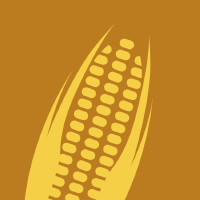Topic Menu
► Topic MenuTopic Editors


Crop Ecophysiology: From Lab to Field, 2nd Volume
Topic Information
Dear Colleagues,
Following the successful completion of Volume I of “Crop Ecophysiology: From Lab to Field” and the great interest in this research topic, we are pleased to announce the launch of Volume II. Increasing crop productivity is an important goal in agriculture. Despite extensive research on the effects of abiotic and biotic stressors on plant growth and development processes, several questions still remain. This topic focuses on crop ecophysiology, seeking ways to help producers to understand crop growth and overcome the risks associated with external factors. Studies on crop growth and development, including seed germination and dormancy, seedling development, photosynthesis, plant water use, mineral nutrition, source–sink relations, and harvest index, are within the scope of this topic. Studies on the mechanism of crop response to environmental stress under controlled or field conditions (high temperature, cold stress, drought stress, high salinity, and combined stresses), pests, pathogens, and other plants are also welcome. In addition, agricultural practices that improve the use efficiency of resources such as water, radiation, N2, and CO2, and reduce dependence on external energy input (soil tillage, agrochemicals and mineral fertilizers, etc.) will also be considered for this topic. Original research manuscripts as well as reviews are accepted.
Dr. Hua Bai
Dr. Dimitra A. Loka
Dr. Wei Hu
Topic Editors
Keywords
- crop growth and development
- biotic stress
- abiotic stress
- agricultural practices
Participating Journals
| Journal Name | Impact Factor | CiteScore | Launched Year | First Decision (median) | APC | |
|---|---|---|---|---|---|---|

Agriculture
|
3.6 | 6.3 | 2011 | 18 Days | CHF 2600 | Submit |

Agronomy
|
3.4 | 6.7 | 2011 | 17.2 Days | CHF 2600 | Submit |

Crops
|
1.9 | 2.4 | 2021 | 23.5 Days | CHF 1200 | Submit |

International Journal of Plant Biology
|
- | 3.0 | 2010 | 19.6 Days | CHF 1200 | Submit |

Plants
|
4.1 | 7.6 | 2012 | 17.7 Days | CHF 2700 | Submit |

Preprints.org is a multidisciplinary platform offering a preprint service designed to facilitate the early sharing of your research. It supports and empowers your research journey from the very beginning.
MDPI Topics is collaborating with Preprints.org and has established a direct connection between MDPI journals and the platform. Authors are encouraged to take advantage of this opportunity by posting their preprints at Preprints.org prior to publication:
- Share your research immediately: disseminate your ideas prior to publication and establish priority for your work.
- Safeguard your intellectual contribution: Protect your ideas with a time-stamped preprint that serves as proof of your research timeline.
- Boost visibility and impact: Increase the reach and influence of your research by making it accessible to a global audience.
- Gain early feedback: Receive valuable input and insights from peers before submitting to a journal.
- Ensure broad indexing: Web of Science (Preprint Citation Index), Google Scholar, Crossref, SHARE, PrePubMed, Scilit and Europe PMC.
Related Topic
- Crop Ecophysiology: From Lab to Field (13 articles)


